Metroid Dread review
Our Verdict
Metroid Dread meets — and arguably surpasses — its lofty expectations, with demanding gameplay, clever level design and an ambitious story.
For
- Tight, challenging gameplay
- Varied, atmospheric world
- Story ties together by Metroid games
- Excellent showcase for Switch OLED
Against
- Punishing dominate fights
- Certain upgrades feel frustrating to find
Tom's Guide Verdict
Metroid Dread meets — and arguably surpasses — its lofty expectations, with enervating gameplay, clever level design and an ambitious story.
Pros
- +
Tight, challenging gameplay
- +
Varied, atmospheric globe
- +
Story ties together by Metroid games
- +
First-class showcase for Switch OLED
Cons
- -
Punishing boss fights
- -
Certain upgrades feel frustrating to find
Metroid Dread: Specs
Platforms: Nintendo Switch
Price: $60
Release Date: October 8, 2021
Genre: Action/run a risk
Metroid Dread is a game that'south about xv years late, and however it feels timelier than e'er. Just as The Legend of Zelda: Breath of the Wild stripped a well-worn formula down to its fundamentals and delivered something fresh, then too does Metroid Dread show us that when it comes to side-scrolling activeness games, less can exist more.
Metroid Dread is light on story, calorie-free on dialogue, calorie-free on tutorials, low-cal on direction and light on helpful hints. In the very kickoff level, yous'll hit the ground running, and have to conquer almost every inch of the deadly Planet ZDR using only your own wits, and a serial of vague directives. Only rather than constraining, this stripped-down approach feels liberating. There's nothing to do in Metroid Dread except to explore the gorgeous world, puzzling your way by each obstacle you encounter. It's the Metroidvania formula at its purest — which is no surprise, when you think that Nintendo pioneered the genre.
For the most part, playing Metroid Dread is similar revisiting a dear old friend. And, like many quondam friends, some of Metroid'southward bad habits are still intact. Boss fights are still incredibly punishing, and demand a level of twitch-reflex perfection that the rest of the game simply doesn't. And, much similar previous games, some of Samus Aran'south upgrades are hidden so well, they're about impossible to collect without a guide.
Otherwise, though, we've waited a long fourth dimension for this game, and gratifyingly, information technology's worth the wait. Read on for our full Metroid Dread review — and if y'all've already finished playing, check out our list of the 10 best games to play subsequently Metroid Dread.
Metroid Dread review: Gameplay
The Metroid series is 35 years former, and spearheaded a whole game genre named in its honor. However, if you have never played a Metroid game before, then Metroid Dread is as good an introduction as any. You play as intergalactic compensation hunter Samus Aran, who has explored all sorts of hostile planets and space stations, fighting off a variety of predatory native brute, space pirates and bioengineered killing machines along the mode.
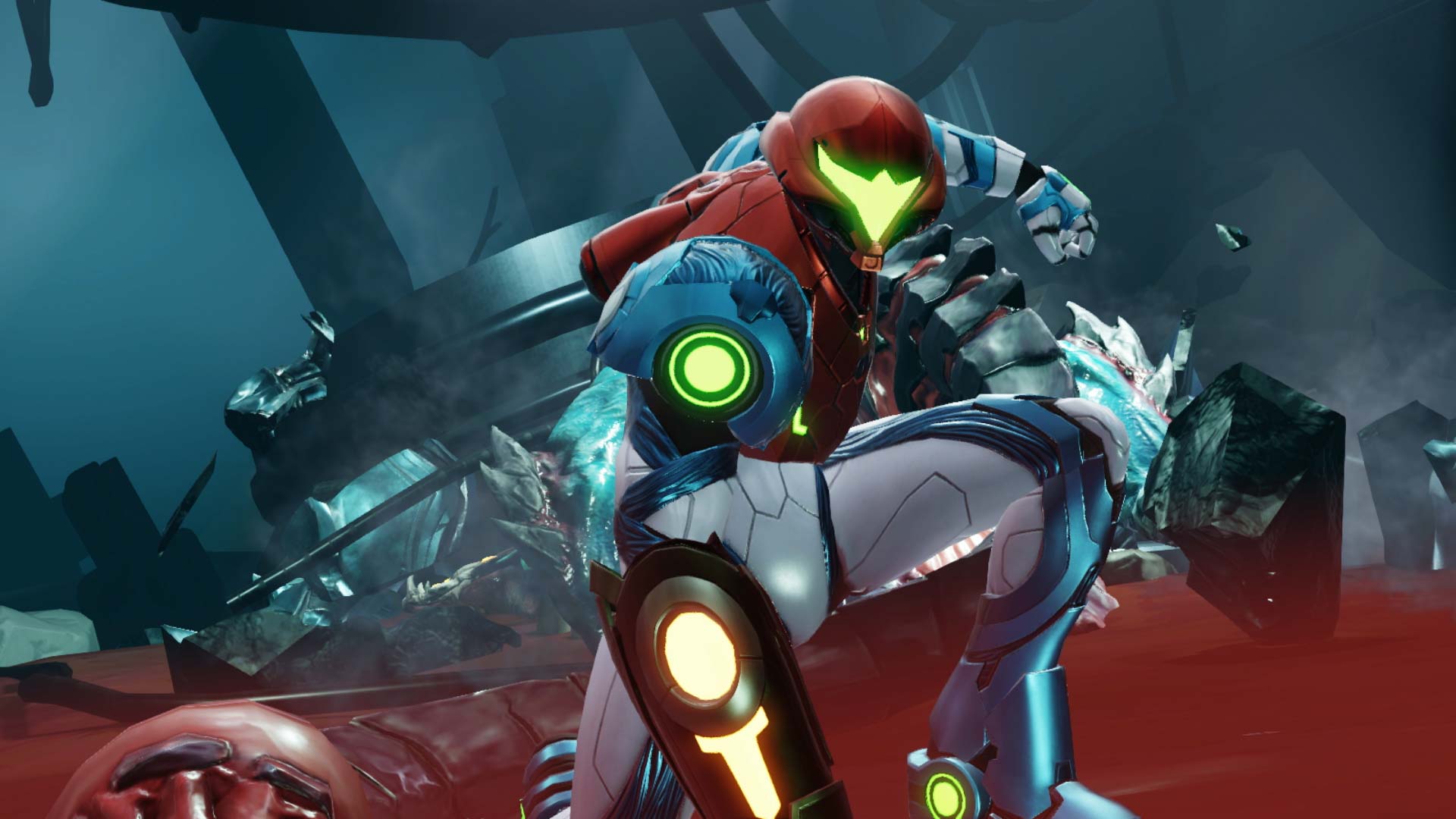
Like most Metroid games (save for the first-person Metroid Prime spinoffs), Metroid Dread is a side-scrolling activity game with a big focus on exploration. At first, Samus can run, shoot, fire missiles, parry melee attacks and not much else. It'south worth pointing out that Metroid Dread gives Samus the power to slide nether obstacles for the first time. Information technology's a worthwhile addition to her armory, and helps facilitate a few heady escapes throughout the game.
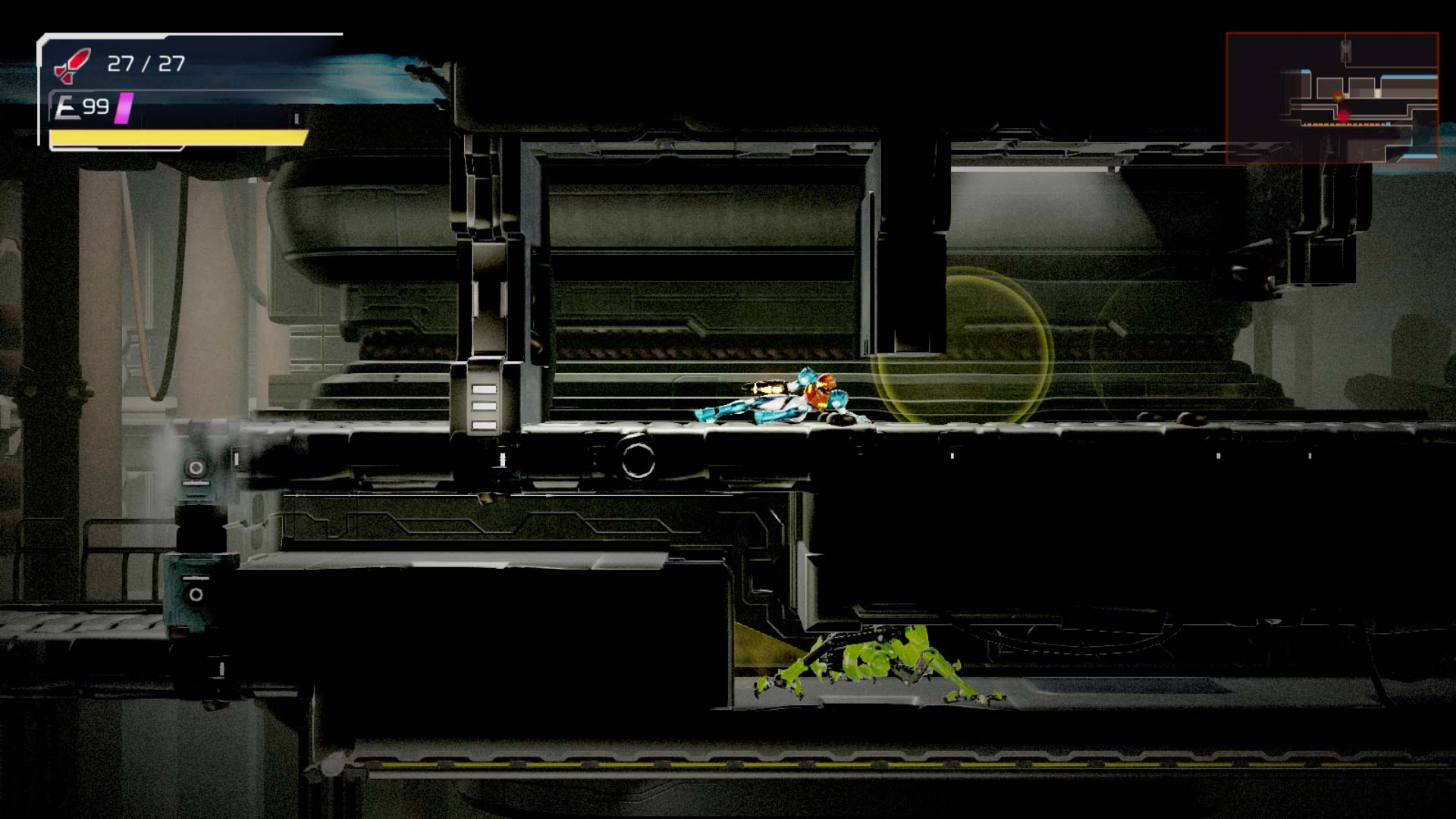
Every bit she explores the eight unlike areas of the expansive Planet ZDR, however, Samus picks up a variety of new abilities. By the stop of the game, she'll exist able to accuse her beam cannon, burn multiple shots at once, scroll up into a tiny Morph Ball, double-jump, turn invisible, grapple across chasms and even institute devastating bombs that destroy just most everything onscreen.
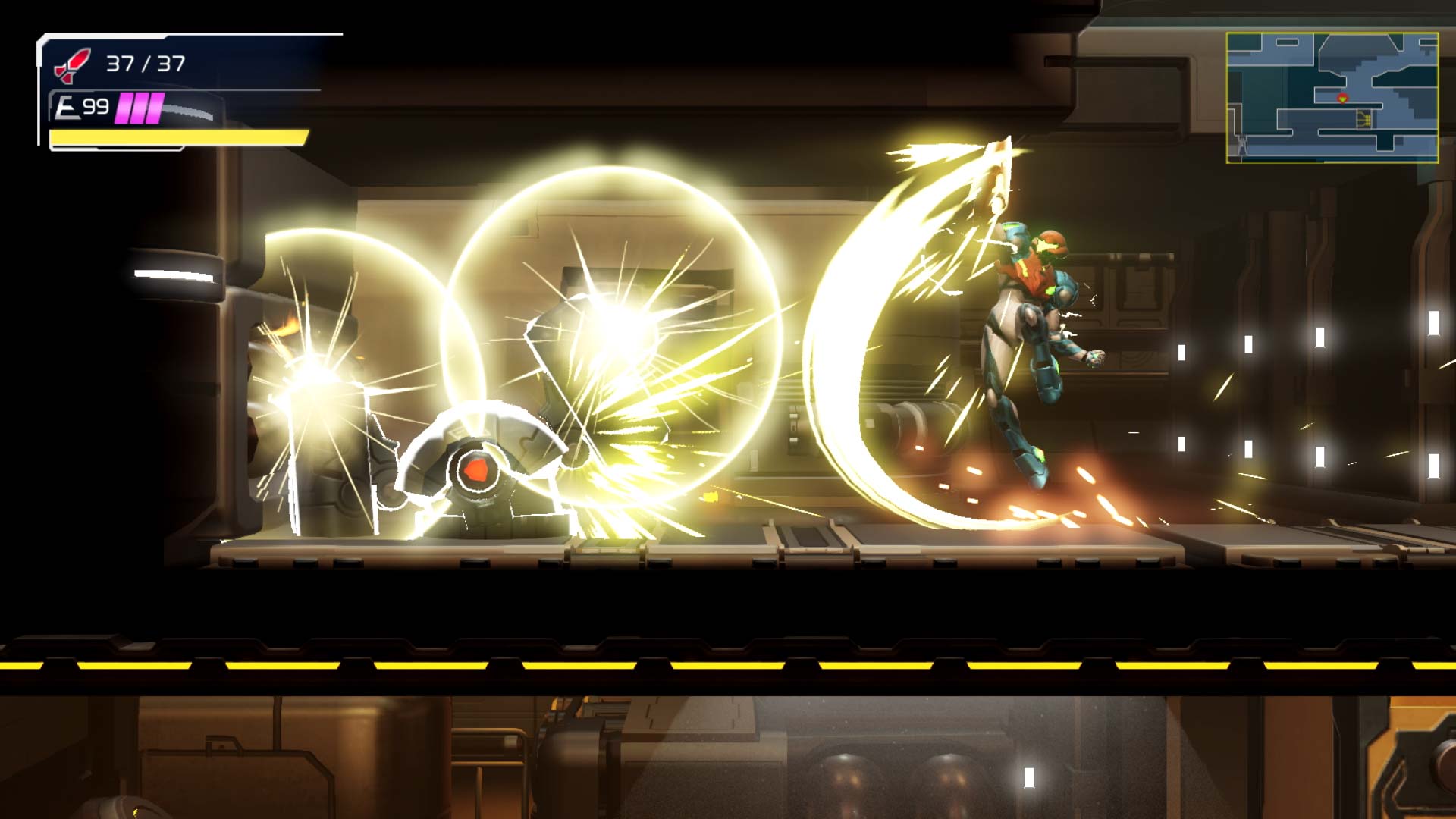
Most of these upgrades are familiar from previous games. In terms of new moves, some additions are ameliorate than others. An instantaneous dodge and a wall-climbing magnet open up upward new gameplay opportunities in almost every level. A personal cloaking device, on the other hand, opens upwardly a handful of locked doors, and doesn't practise much else.
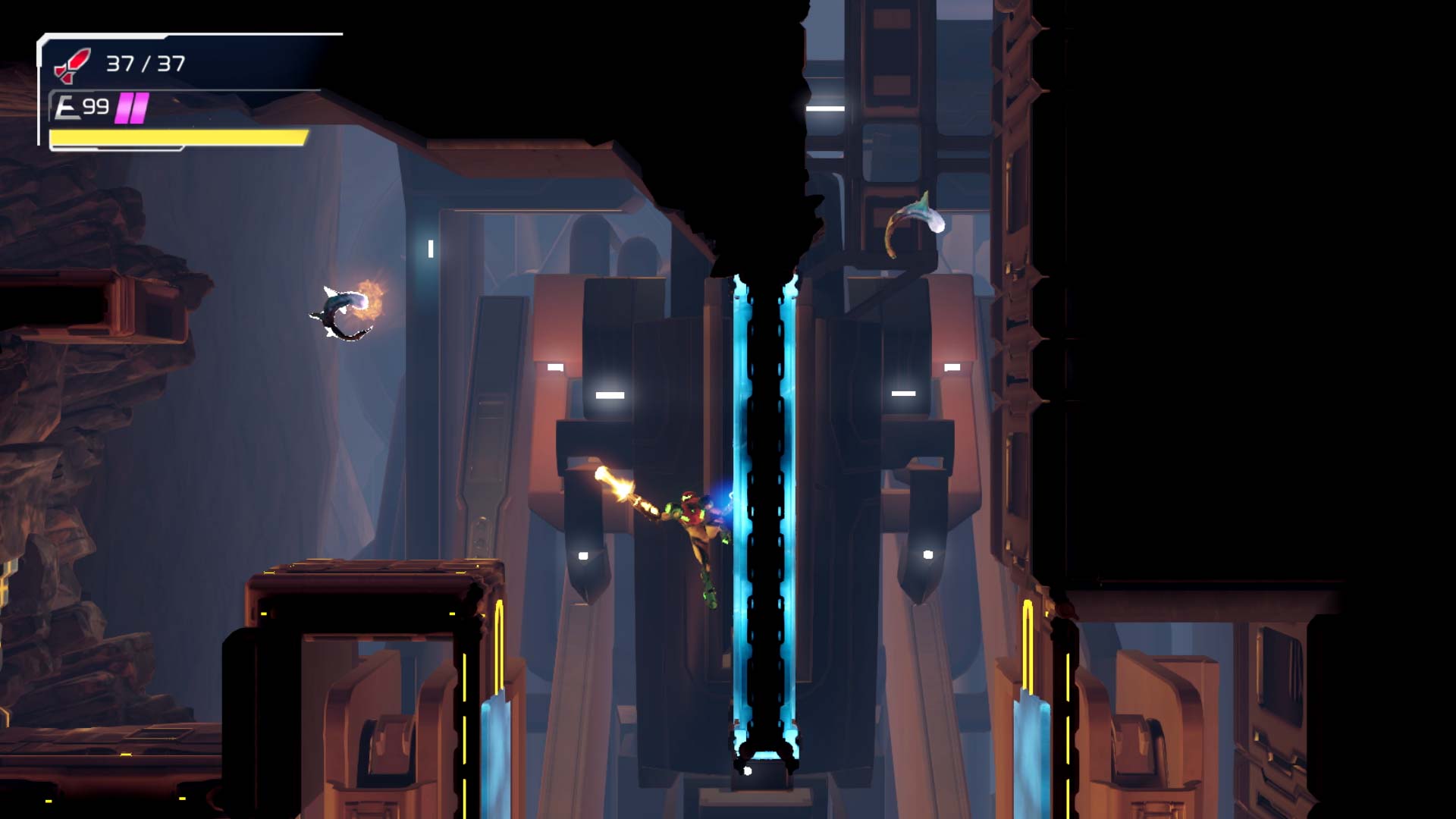
What struck me about nigh Metroid Dread every bit I played was just how little the game holds your hand — and just how intuitive navigation feels, anyway. Your accommodate's congenital-in reckoner, ADAM, will sometimes give you vague objectives, but it doesn't dispense hints or forcefulness you lot downwardly a certain path. The game is a master class in game design that subtly leads you to your adjacent objective without always telling you lot explicitly where to go.
Each new ability can get you by a different kind of obstacle, which almost invariably leads to a room you haven't explored earlier. There's no "incorrect" path to take — sooner or afterward, you'll become where you lot're going, find some other unlockable power, and repeat the whole virtuous cycle again. Metroid Dread is a quiet, atmospheric game that's easy to get lost in for hours on end.
The only downside hither is that certain subconscious upgrades — for health, missile chapters then along — are ridiculously unintuitive. Virtually upgrades ask you to solve a uncomplicated puzzle or two, but a handful of items require pitch-perfect platforming, exploring seemingly unconnected areas or simply bombing every nearby surface in the hopes that something clicks. It'south a potentially frustrating, time-consuming process for completionists.
Metroid Dread: E.M.M.I. sections and dominate fights
Some other new addition in Metroid Dread are the E.M.M.I. robots: scientific inquiry automatons that have gone amok and started hunting Samus. As you explore Planet ZDR, you'll occasionally come up across an surface area where the screen goes a bit gray and grainy, and a red dot will evidence up at a distant point on your map. In these crucibles, Samus must evade an East.M.M.I. and hunt down a special resource called Omega to take them down.
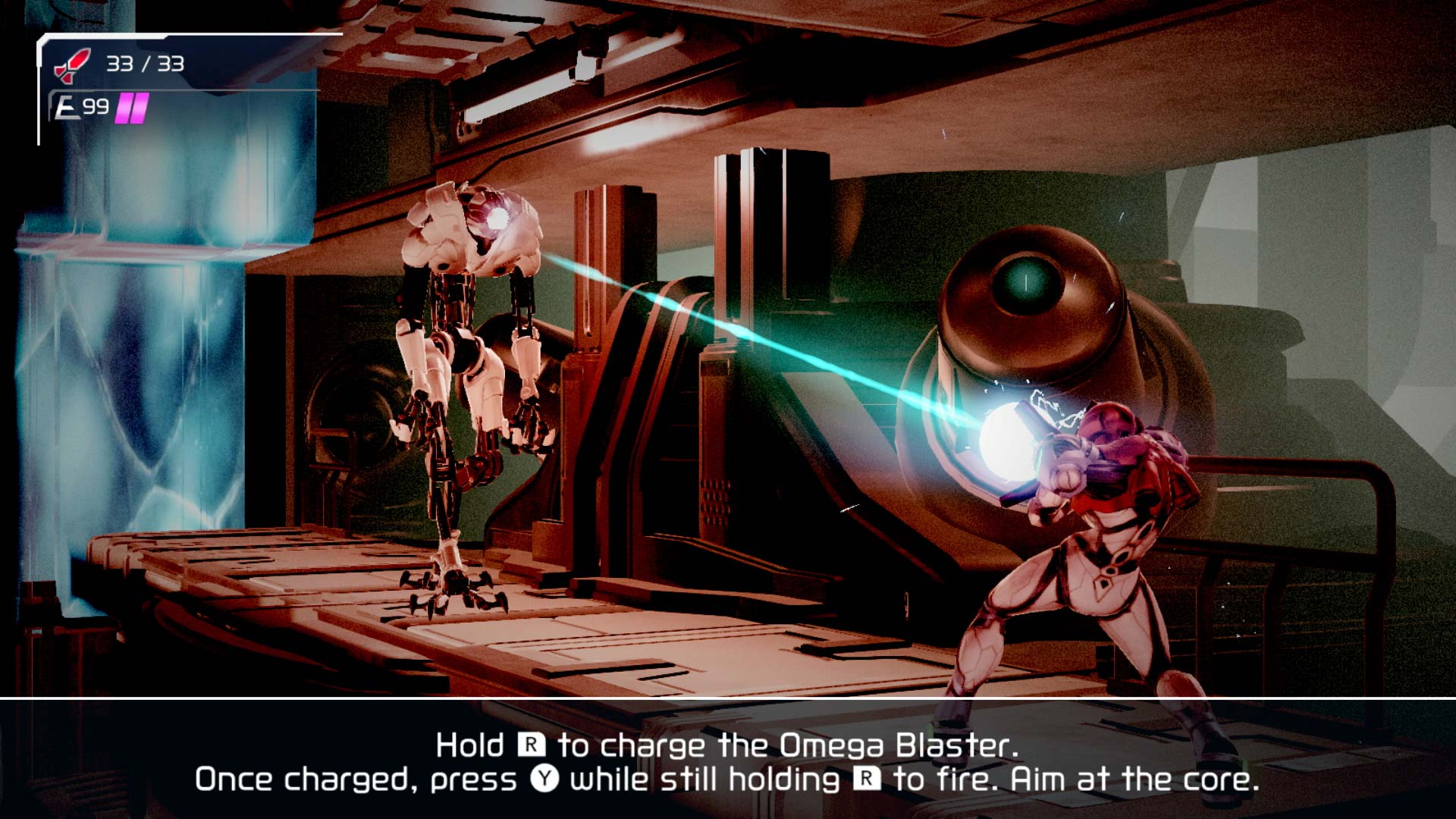
The E.M.K.I. sections tin be both exhilarating and frustrating. Narrowly escaping an E.1000.Yard.I.'southward clutches or setting up the perfect deadfall equally one closes in on you are some of the most exciting moments in Metroid Dread. Simply more ofttimes, y'all'll blunder into an E.G.1000.I., find yourself unable to escape, and have to starting time the whole department over. What's intense and terrifying the first time can get tiresome by the tenth.
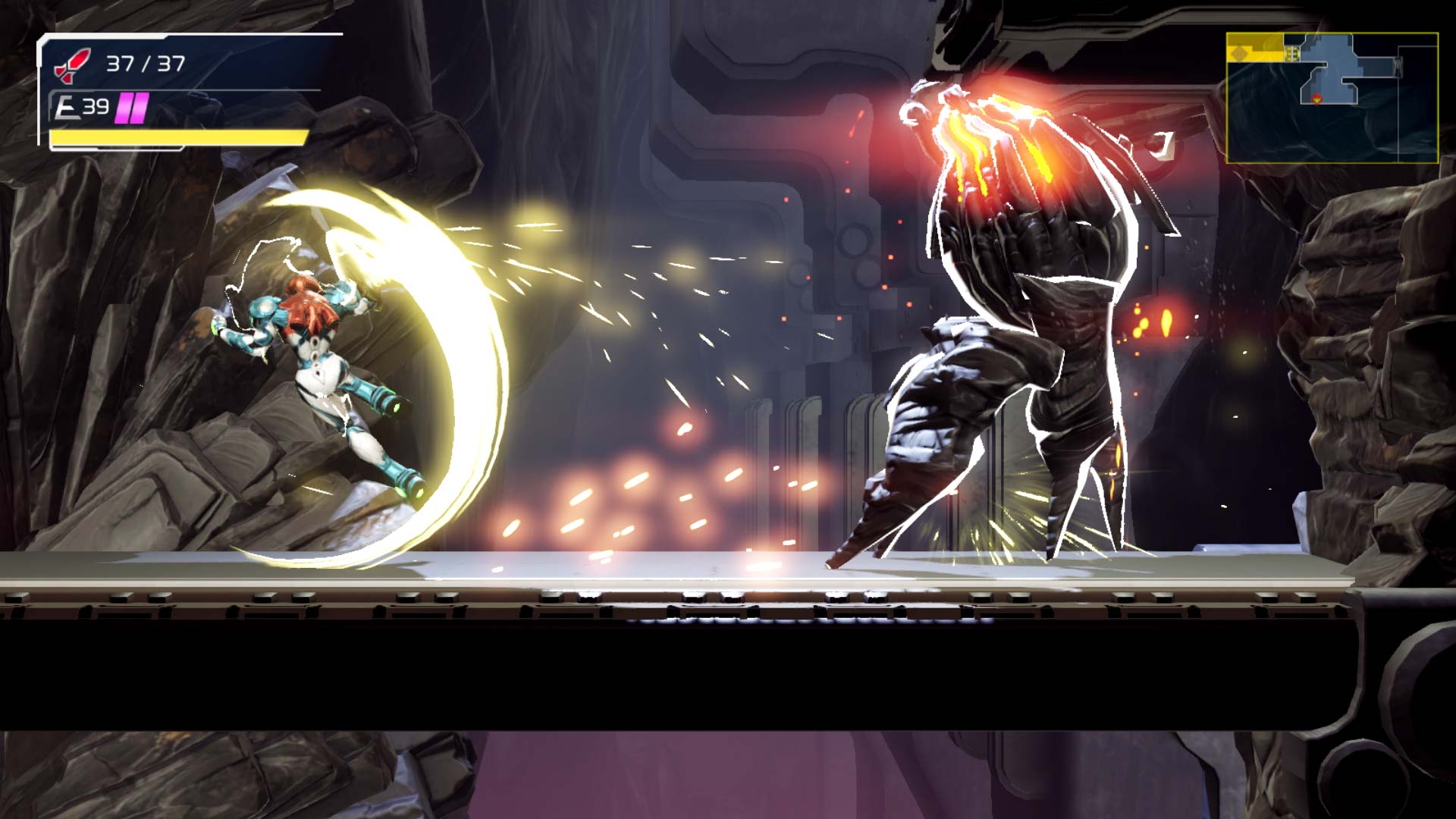
Similarly, while virtually of Metroid Dread has a chill-simply-challenging vibe, that all changes when you run across one of the game's dozen or so bosses. These adversaries, which range from enormous sea creatures to agile robotic soldiers, can all obliterate Samus's wellness bar in only a few hits, and crave carve up-second perfection to contrivance attacks and exploit weaknesses. They're satisfying to defeat, only they're too punishing in a style that feels at-odds with the balance of the game.
Metroid Dread review: Story
Metroid Dread is one of the more than narrative-driven games in the series, but never in a mode that conflicts with the solitary, minimalistic ambiance. After wiping out both the galaxy-threatening Metroids and Parasite X in previous games, Samus finds herself bound for the remote Planet ZDR, where a alone Parasite X may however exist. In that location, she encounters the impossible: a warrior from the supposedly extinct Chozo race, who seems to want her dead.
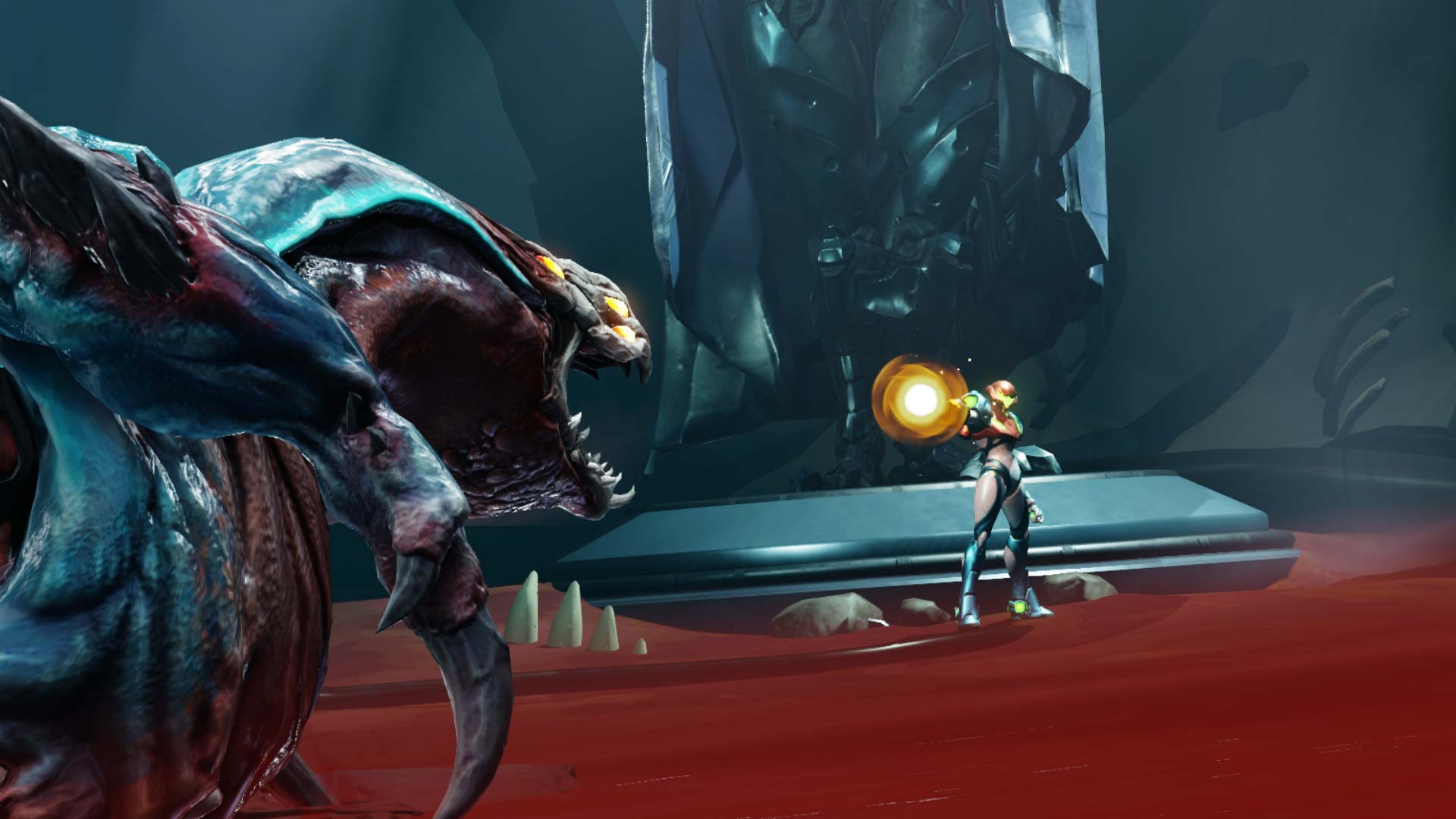
Metroid Dread weaves in a ton of series backstory, from Samus' struggles against the Metroids, to her ain personal history of being raised by the Chozo. Newcomers may non grasp the finer points of the plot, but the wide strokes are pretty comprehensible: Planet ZDR is dangerous, and Samus has to escape before her pursuer hunts her down. Afterward in the game, there are some pretty dramatic twists, but by then, fifty-fifty Metroid neophytes should feel sufficiently invested in Samus' survival.
Metroid Dread review: Visuals and sound
While the Nintendo Switch is starting to testify its historic period adjacent to competitors like the PS5 and Xbox Series X, Metroid Dread's art fashion goes a long fashion. Planet ZDR has a variety of gorgeous environments to explore, from the foreboding caverns of Artaria, to the lava-filled passageways of Cataris. Earlier her adventure is out, Samus volition explore frozen wastelands, underground forests and ruined fortresses, each one with a unlike color scheme, level design and set up of enemies. Metroid Dread is hard to put down, if only because you never know what you'll see side by side.
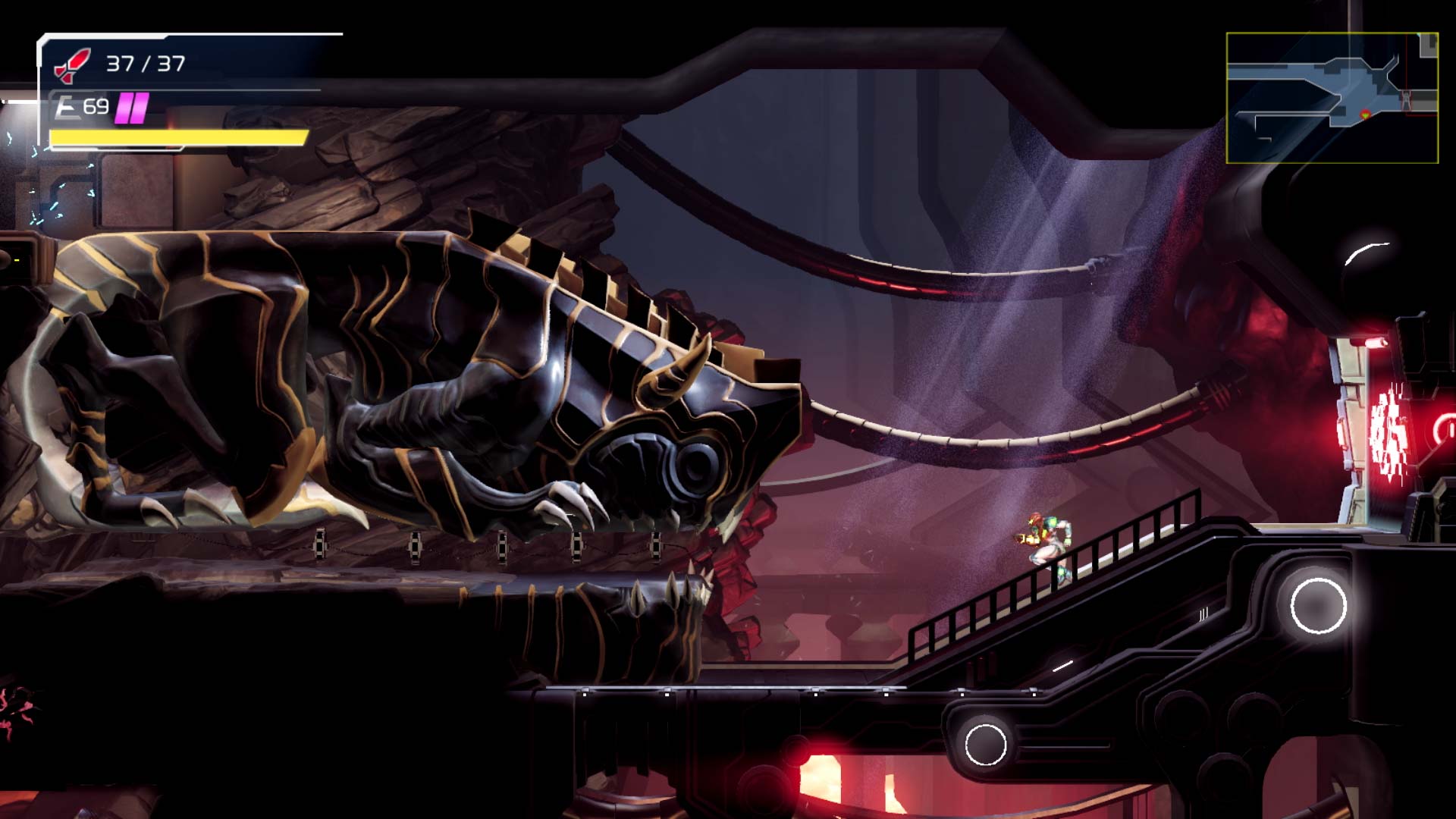
The music is likewise an agreeable mix of ambience groundwork tunes for exploration, with more urgent techno beats for big battles and chases. In that location's not much vocalization interim to speak of, but the sound effects work well, from the ping of a single arm cannon shot, to the roar of a deadly scorpion beast.
Information technology'south worth mentioning that one way to take reward of Metroid Dread'south strong visuals and sound is to play the game on a Switch OLED. Metroid Dread and Nintendo'due south newest panel variant both launch on the aforementioned day, and information technology'southward like shooting fish in a barrel to run across why. An OLED screen accentuates the game's deep blacks and vivid reds, while the console's improved speakers can go on you immersed without headphones.
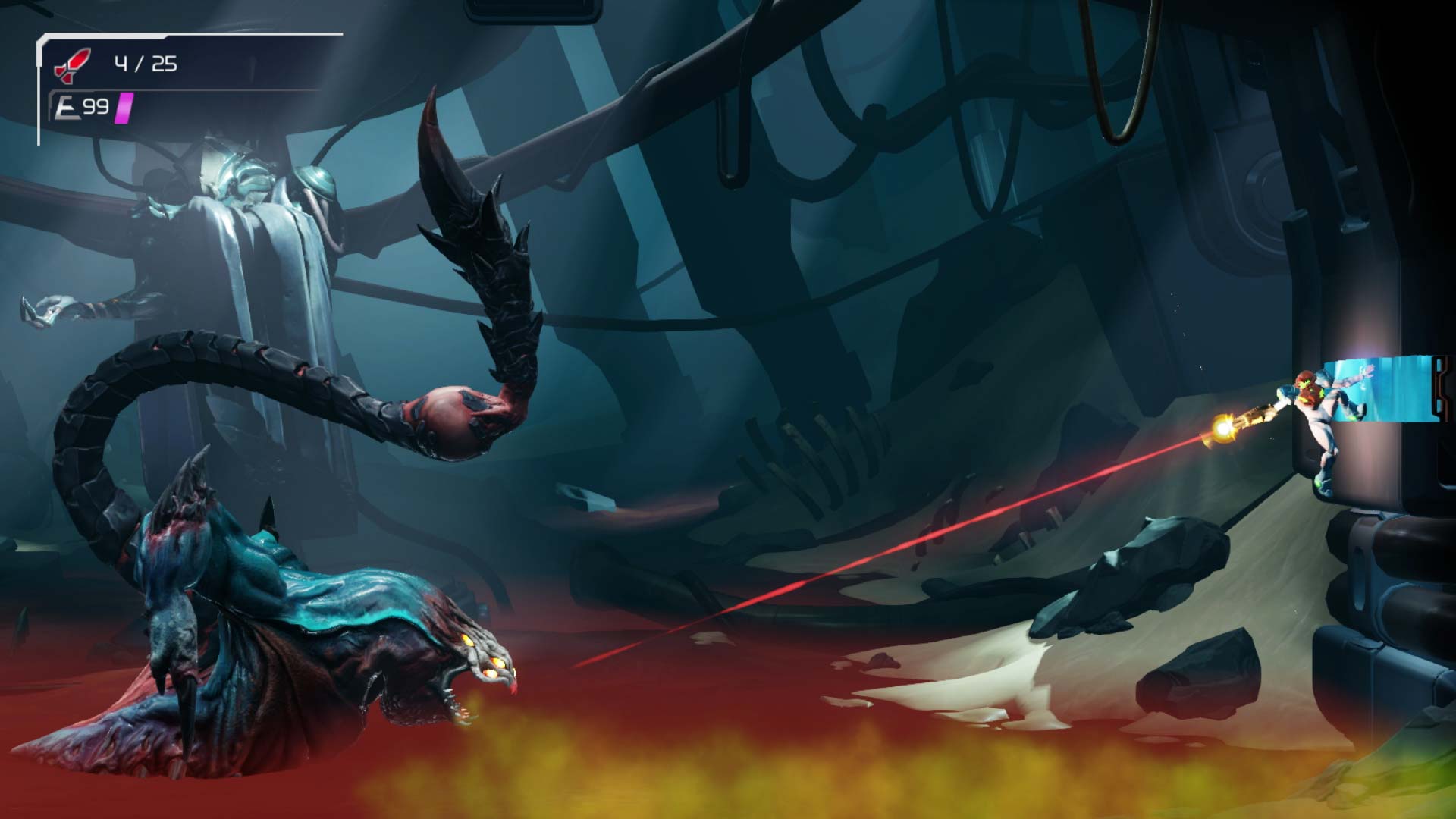
To be clear, I don't think the Switch OLED is necessarily worth buying if you take a base of operations-model Switch. Just if you lot're going to get a Switch OLED anyhow, Metroid Dread is the game you lot should get with it.
Metroid Dread review: Verdict
In a way, it's remarkable that it took Metroid Dread so long to come up out. Afterward a few minutes with the game, I felt all the sometime habits coming back — running and gratuitous-aiming at the aforementioned fourth dimension, checking every nook and cranny for hidden upgrades and obsessively checking the map to see if at that place was a tiny doorway somewhere that I'd left unopened.
As Metroid games become, I'm not quite certain where Dread fits in the hierarchy yet. In terms of gameplay, it's most like to Samus Returns on the 3DS; in terms of story, it owes a lot to Fusion. In terms of scope, it takes cues from Super Metroid. Simply ane thing is articulate: it's been too long since nosotros had an original side-scrolling Metroid game, and Dread fills that niche nicely.
If you've been waiting for the series' triumphant return, this is information technology. And if you oasis't tried Metroid earlier, now's the time to join Samus Aran on her latest adventure.
Source: https://www.tomsguide.com/reviews/metroid-dread
Posted by: burtonhavere.blogspot.com


0 Response to "Metroid Dread review"
Post a Comment